We need to repave Old San Juan. It’s overdue and the city is falling apart. We also need to convert Old San Juan into a pedestrian city. So here’s a 10 step plan to do just that.

Orlando Mergal
My name is Orlando Mergal. Think of me as a guy with a camera, a computer and the Internet. I’ve been visiting Old San Juan since the early 70’s… and I’d like to see it repaved. Not in cheap concrete bricks but in its original blue slag pavers. Old San Juan is the oldest city in Puerto Rico and the third oldest in the Western Hemisphere. It’s also the oldest continuously operating city in the United States and parts of it are recognized as a UNESCO World Heritage Site. Oh, and did I mention that it’s beautiful?
Visiting Old San Juan is like stepping back in history. The architecture, the streets and the old forts, the churches all transport you to the 16th, 17th, 18th and 19th centuries. It’s like Disneyland but without the animatronics. It’s also full of restaurants, bars and small hotels. It’s a cosmopolitan city like no other in America.
But vehicular traffic is killing Old San Juan. Somehow, in some twisted way, Puerto Ricans picked up the notion that its fun to sit in a car —sometimes for hours at a time— drive over potholes in the blistering tropical sun, and pollute everything around them. It’s sheer idiocy if you ask me, but it happens day in and day out.
Just think of it. Finding a parking spot in Old San Juan is murder, you can’t bring your car with you into restaurants and museums, so why drive at all? Why not walk?
Residents have it a little easier. They can park on the streets. However, being able to do something and actually getting to do it are two different things. Most of the time they end up parking far from home and exposing their vehicles to potential hazards. To avoid these perils many of them end up paying for parking at one of several private garages.
There are better ways to deal with these problems and most of them aren’t new. This kind of problem has plagued small cities in Europe for decades. And what they’ve found is that solving it is a matter of leaving childish attitudes behind and creating the infrastructure to make things happen.
The ideas that I’m about to propose in this article aren’t new. Hell, most of them aren’t even mine. I’ve seen them all before in Europe and in the United States. You probably have too. And believe me, THEY WORK!!! Some people might consider them hair brain. But hey, I’m not an urban planner. I’m just a concerned citizen. We’re destroying Old San Juan!!! So if you don’t like my ideas, “NO PROBLEMO”. Feel free to bring up your own. Let’s discuss them and repave Old San Juan. And if your ideas are better we’ll use them. Let’s actually solve a problem. Lets repave Old San Juan.
1. “Departamento De Hacienda”, a building in the wrong place
Puerto Rico’s Treasury Department is located across the street from Pier 4 in Old San Juan. Why? In my view a Treasury Department is nothing but a giant accounting office, so it could work just as well in Hato Rey (where there are plenty of underutilized buildings), at Metro Office Park or anywhere else —for that matter— where there’s adequate space, power and data facilities. The only reason why “Hacienda” is in Old San Juan is because that’s where it was when most of Puerto Rico’s commercial shipping and wholesaling operations took place in Old San Juan. That was back in the 50’s and 60’s. This is 2024.
So step one would be moving the Treasury Department somewhere else, demolishing the building and erecting a parking structure large enough to accommodate all the cars belonging to Old San Juan residents and tourists. The building would need to be attractive enough to sit in front of the tourism peers, although lately government has been doing everything in its power to scare off every imaginable cruise ship company (but that’s a story for another day). It would also need to be architecturally compatible. Otherwise it will stick out like a sore thumb!
2. Micro Buses, the only viable way to get around Old San Juan
The other day an idiot tried to drive a full-sized school bus down “Calle Del Sol” and “Caleta De Las Monjas”. Needless to say, he made a fool of himself, messed up the bus and destroyed a great amount of government property. And who’ll pick up the tab? Probably you and I.
Simply put, Old San Juan wasn’t built for large vehicles. In fact, it wasn’t built for gas vehicles at all. Back in the 16th, 17th, 18th and 19th centuries people got around on foot, on horseback or on horse drawn carriages. That’s why the streets in Old San Juan are so narrow and the houses have no garages.
Small European cities have had similar dilemmas but they found a solution. They call them “micro buses”, or at least that’s what they call them in Spain, where I saw them for the first time.
Once again, they’re nothing new. I rode the first one back in 1984. They’re simply small vans like the ones used by car rental companies to shuttle tourists from and to the airport. They’re also great to shuttle residents from a central parking area to their destination and back. Riding these shuttle buses is generally free since anyone using them will be either a resident, a tourist or a visitor conducting some kind of business in the city.
Another option would be to make them free for residents carrying some sort of magnetic card and charge a small fee to tourists and visitors. However, that would make the system less attractive for the later groups.
Last year I saw a shuttle system like this in Oklahoma City. The shuttles are a little larger, and they charge you a dollar for the ride, but they are sleek, modern, and clean. Oh, and did I mention that the ones in Madrid run on batteries? That’s right. No gas!
3. Slag Pavers, the best option to repave Old San Juan
The original blue pavers found in Old San Juan today were imported from England starting in the late 19th Century. They were made of slag, a stony waste matter separated from metals during the smelting or refining of ore. They were placed over a sand base and later locked together with even more sand.
Throughout the years some have been paved over with black top and others were just removed altogether and thrown in San Juan Bay. It’s actually a miracle that so many have survived amid so many numb skull politicians.
To produce slag you have to have metallurgy going on, and Puerto Rico abandoned this industry decades ago. But that doesn’t mean that it can’t be brought back for this specific purpose. God knows that we have more than enough scrap laying around from past industrial experiments. Add to that the devastation brought on by the past two hurricanes, and the destruction produced by January 2020’s earthquakes, and you’d have plenty of raw material. We also have plenty of capable personnel and empty factory space of every size and shape.
So why not start a local metallurgy operation just to produce slag pavers? I don’t know if this is even viable, or how much it would pollute, but it’s certainly an idea worth exploring. If not, we could always have them made somewhere else.
4. Money… without it we can’t repave Old San Juan
I was going to discuss this aspect of the project last, but I can already hear the collective yelling out there: “how is this guy proposing to pay for all this”? Well, here are a couple of ideas. And, by the way, they aren’t new either. Have you ever been to Disney World in Orlando? Have you seen the thousands of pavers that cover the square before entering Main Street USA? Have you noticed that each and every one of those pavers is personalized? That’s right!!! They all say something like “The Rivera Family, 1988”.
Unfortunately, the pavers used at Disney World were made of tile, and they’re slowly falling apart, so Disney management has announced that they will soon be removed. But what if they were made of slag? Slag is actually metal that could be laser etched. It could also last way longer than tile if you don’t drive motor vehicles over them.
I honestly have no idea how many pavers it would take to repave Old San Juan. That’s the kind of question that maybe my friend Dr. Fernando Abruña could answer. But let’s guess a number. Let’s guess that it would take half a million (500,000). Maybe that’s too much or too little. Once again, I don’t know. But it’s a nice round number and we have to start somewhere.
Now imagine selling each paver as a personalized item. You could sell personal pavers, family pavers and corporate pavers and place them accordingly throughout the city. To keep things affordable personal pavers could cost $25, family pavers $100 and corporate pavers $250. No one could buy more than 100 pavers. That way you wouldn’t have entire streets hogged up by corporate greed.
Now let’s look at the numbers. 300,000 personal pavers sold at $25 a paver would bring in 7.5 million dollars. Another 100,000 family pavers sold at $100 would bring in an additional 10 million. And 100,000 pavers at $250 would bring in 25 million dollars. All together personalized pavers alone could bring in over 42.5 million dollars. Changing the distribution could make the final number even larger, so would more pavers if I underestimated my initial figures.
But wait, there’s more! What if you could sell advertising inside the micro buses, on the outside of the micro buses, on the microbus cards, inside the parking structure elevators and maybe even sell the naming of the structure like they do with arenas in the United States? Don’t you think that an airline, a cruise ship company (if there’s still one around) or a local bank could take the city up on the offer?
5. Actually repave Old San Juan
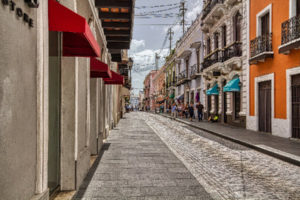
This is what Fortaleza Street looked like back in June, 2015, right after it was paved with poor quality materials. Notice the oil slick in the center already rearing its ugly head. Click on image to see it larger.
Once again, I’m not an engineer, so I can’t speak of the actual intricacies that a project like this might entail. But one thing I do know. Once a street is repaved it would need to be closed to vehicular traffic PERMANENTLY. That means that a walkable Old San Juan would be a process rather than an event. But it would need to be a process with a deadline; not one of those that goes on for ever. A goal without a date is a dream.
We have all seen what repaving and reopening looks like. Albeit that the most recent repaving seems to have been done with second rate materials. But regardless of what type of materials were used, it’s obvious that repaving streets only to reopen them to vehicular traffic is sheer stupidity. Just take a walk in Old San Juan and you’ll see what I mean.
We have to get everyone on the same page and get them to understand that as a society we are destroying one of Puerto Rico’s greatest assets. Not to mention the fact that Old San Juan has tunnels underneath that crisscross the city and could someday cave under all that vehicular vibration.
6. Find your Paver… Another Way to Rake In The Cash
With the wave of corruption that has smothered governmental credibility in Puerto Rico, it’s hard to get people to believe anything that our “honorables” say. Simply put, in the minds of the people, if it comes from a government figure it must be a lie! So why not use that as an advantage to repave Old San Juan. Huh?
Once the repaving starts the city could invite people over to find their paver. That way they’d be sure that it’s there. Chances are that they’d bring their families, spend the day in the city, pay for parking, spend in the shops, visit attractions and maybe even eat at a local restaurant. It would create a syphon effect that would funnel dollars into the old city’s hurting economy.
And how would we reach those people? Simple!!! Direct mail. Every time a paver is sold the buyer would provide his/her name, address, phone number and email. This would go into a database that could be used to send snail mail, email and text messages. If not abused, a database of Old San Juan enthusiasts like this could be a gold mine to promote other events in the City as well.

7. When and Where To Close The City
The city could remain open as long as the main streets leading in and out were not paved. This would include streets like Norzagaray, Fortaleza, San Francisco, Comercio, Tetuán, Recinto Sur and the waterfront. Once these streets are paved the city would be permanently closed to vehicular traffic. Closing could take place right before Fort San Cristóbal, where oncoming traffic could turn left and return through road 26. The same could be done in front of Peer 7 next to the Puerto Rico Capitol building. If the repaving were extended all the way to the capitol building (which would be beautiful) traffic could be closed off right before the capitol building.
I would be the first to admit that urban planning is not my thing, so these checkpoints could vary greatly, but something needs to be done and quick. There are plenty of people smarter than me on the Island so this would be a great opportunity for all those experts to chip in.
Another aspect of closing down a city is what to do with all the vendors, suppliers and professionals that need to visit the city periodically. Well, why not give them electronic permits that would allow them to enter the city for a couple of hours hours at a time. Those that exceed the allowed time limit would be fined. Cards would also need to be programmed to avoid a revolving door effect (that’s when you go in, out and back in for an additional two hours).
People that work in the city could be granted special permits, but they would need to park in one of the many private parking garages.
Similarly, visitors would need to comply with vehicle size and weight regulations. Nothing larger or heavier than a micro bus should be allowed inside the closed perimeter.
Absolutely no one would be allowed to park on the street except for delivery vehicles. And even those would have time limits. Everyone else would have to use a parking garage or face stiff fines.
8. Using technology to close the city
Every vehicle entering Old San Juan would need to have some kind of pass. This could be something similar to the EasyPass like stickers that are used on toll roads. That way they could be programmed differently for vendors, suppliers, workers and residents.
Vendors and suppliers could have a two-hour window to get in and out. Exceeding that time would result in stiff fines that would appear on their EasyPass monthly statement. Failure to pay those fines would result in pass cancellation and losing the ability to enter the city altogether. Hacking the system in any way could entail stiffer fines and even jail time.
Residents would have an hour to drive up to their homes, unload any groceries or packages, exit the city and park at the resident parking structure.
Moving companies and other ocasional visitors could be issued a temporary pass commensurate with their particular needs. Every checkpoint would have at least one guard in charge of these special situations.
None of this is new. The technology is basically the same one used for toll roads, in gated communities and at country clubs around the world. It would just be programmed differently.
Access to the city for pedestrians would be unrestricted.
9. Local and International Promotion
A walkable Old San Juan would be worldwide news. Many tourists that hate Old San Juan because of the pollution, noise and traffic would gladly visit an all-new city peppered with sidewalk cafes, children running freely, people walking and biking on the streets and a cleaner all-around environment.
A new sense of community would flourish where traffic jams and honking horns made life miserable before. Property prices would go sky high due to improved living and business conditions. Our government officials could collect more property taxes, and God knows they love that!
More events could take place where cars used to park. Narrow streets would seem wide again. The entire city would “breath” like it hasn’t in over 100 years.
And believe me, international media would eat it all up, like they’ve taken notice in Madrid, Seville, Toledo, and so many other European and American cities.
10. A Governing Board To Make It All Work
When I worked in the pharmaceutical sector we used to joke that a camel was a horse created by a committee. But in this case it would be a necessary evil. You need representatives from all walks of society to arrive at a meeting of the minds to assure that everybody’s happy.
The governing board for a walkable Old San Juan should be very different from traditional governing boards that are usually full of politicians and bureaucrats. It should be diverse and every member should have an equal voice. It should include politicians from the local and state government, policemen, firemen, emergency workers, business people, professionals, restauranteurs, hoteliers, bar owners, the San Juan Historic Site (the forts), residents, media representatives, clergy, people involved in the tourism industry and just regular concerned citizens. Anyone affected should have a voice and a vote. And it should change at least every two years.
One mistake that many Old San Juan residents make is thinking that just because they live in the Old City it means that they own it. Well guess what? They don’t, and living there has its own challenges. Old San Juan belongs to all Puerto Ricans. That’s why we can’t continue abusing it. That’s why we have to preserve it for our children, for our children’s children and for the rest of the world to enjoy. Just like with global warming and climate change the time to do something meaningful was YESTERDAY!!!
If it were up to me I wouldn’t only repave Old San Juan, I’d demolish everything built during the 20th Century along the southeastern quadrant of the city, rebuild the southern portion of Fort San Cristóbal (including Santiago Gate) and put back the portion of the wall that went between San Cristobal and San Justo Street (including the San Justo/España gate). Of course, that’s just the dreamer in me speaking, but can you imaging what having the “only walled city in America” would do for Puerto Rico’s tourism? It would go through the roof!
However, it’s a little late for that; about 130 years too late. I know. But it’s not too late to restore Old San Juan to its former splendor. In fact, I don’t know of any other city in America (and maybe the world) (don’t quote me on that last statement) that is fully paved in 19th Century style slag pavers. That in itself would be a tremendous draw for tourists from every corner of the globe.
Still not convinced? Watch the following video.
In my previous article I wrote about our nature preserves in the town of Cabo Rojo and how they all leave much to be desired with one notable exception: the Cabo Rojo National Wildlife Refuge. Why can’t we set an example with Old San Juan? God knows that nothing can stop us when we put our collective minds to it. It just seems so hard a thing to come about.
Tell your friends about this article. Let’s start a conversation. I don’t claim ownership for any of the ideas in expressed here. The truth of the matter is that most of what I mention already exists somewhere else. I just put them all together in a cohesive and easy to digest fashion (if you’re still with me). I just want to repave Old San Juan and close it to vehicular traffic. So all you braindead politicians out there, looking for bright ideas to call your own, here’s your opportunity. I’ll be more than happy to applaud your “forward thinking”. I won’t even mention that I saw something similar somewhere in Europe, or in the United States, 20, 30 or even. 40 years ago. I’ll just be happy to finally see our “San Juan Peatonal”.
©2020,Orlando Mergal, MA
____________________
Bilingual Content Creator, Blogger, Podcaster,
Author, Photographer and New Media Expert
Tel. 787–750-0000, Mobile 787–306-1590
#repaveoldsanjuan #oldsanjuan #ciudadpatria #viejosanjuan #sanjuanpeatonal#prtourismcompany #prtourism #puertorico #orlandomergal #puertoricobygps #puertoricophotography
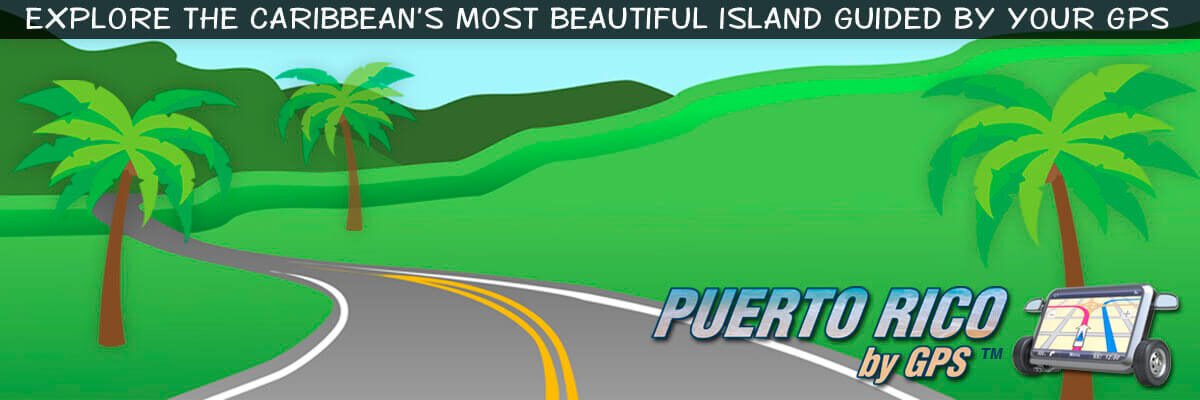
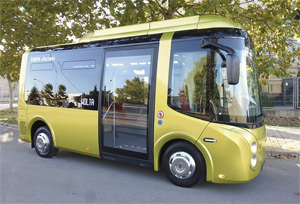
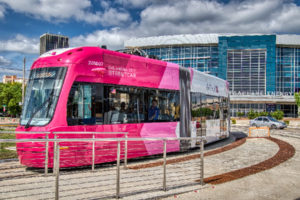
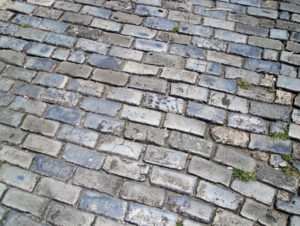
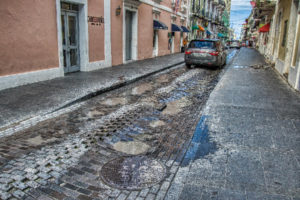
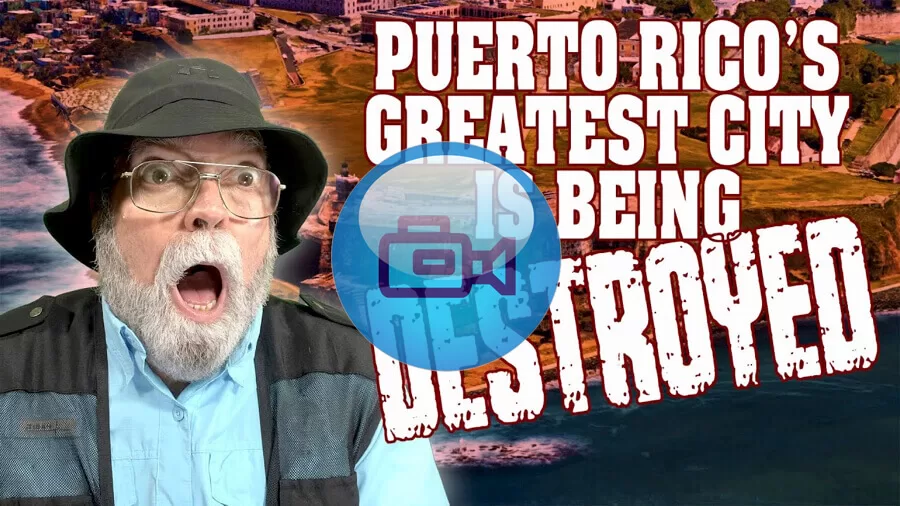

Hi Orlando, long time without hearing from you, Happy to see you around again, very nice article. I will suggest in addition removed governor from La Fortaleza and moved his family to better place where security forces managed better protests and group destructions Dedicate La Fortaleza as museam for tourists and local citizens
Actually, having the governor live at La Fortaleza is a “monarchical” aberration. I would move the governor’s office to a more modern facility outside the Old City and turn Santa Catalina Palace into a museum. Some people have proposed this in the past but politicians like the pomp and circumstance, the fancy palaces and the black cars with blinking lights.
I guarantee that at least a 25% less cars ruining streets and not politicians around, it will make SJ walkable easier and achievable. It will take out destruction of the city historical buildings by protestors and crime acts.
The whole thing is perfectly doable. It hasn’t been done because the powers at be don’t want to and don’t care about the destruction going on.